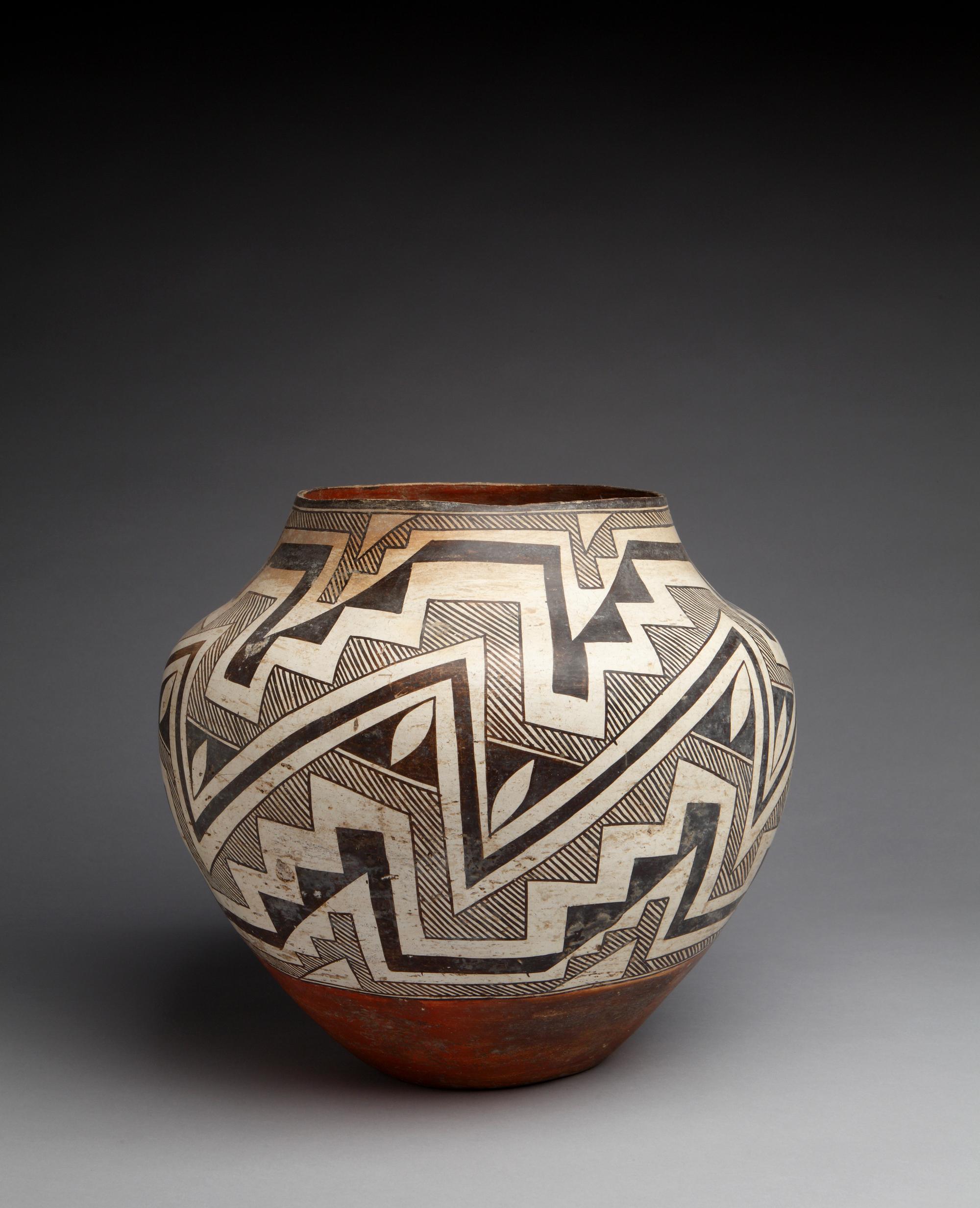
Photograph by Addison Doty. Copyright 2014 School for Advanced Research.
Water jar
Date: c. 1900
Artist or Maker: Unknown
Dimensions:
Weight: 29.2 × 33 cm (11 1/2 × 13 in.)
Weight: 2.7 kg (5.9 lb.)
Medium: clay | paints
Credit Line: Indian Arts Fund purchase for the permanent collection, 1926.
Place Made:
Valencia County, New Mexico, Southwest, United States, North America
Object Number: IAF.626
Not on view
Tribal Collection Review RemarksAccording to the participants in the Acoma collection review visit June 3-5, 2015 (Events Record “Collection Review: Acoma Pueblo, Review 2”): The design on this jar is primarily a lightning and rain design with black and rain line filled stepped bands. There are also elements of clouds, mountains, and the mouth of the mountain. The paint on this jar is very dark. There is a section of the black paint that is pale or light which may indicate the paint did not have enough bee weed binder in it or it could simply be that the paint was not thick enough. Another possibility is there could have been an issue with the firing and the pot did not fire evenly. The jar is uneven and is accentuated in the direction of the slants in the design. The jar doesn’t have much pitting so it is unclear what temper was used, either potsherds or gravel (river sand).
According to the participants in the Acoma collection review visit February 26-27, 2019 (Events Record “Collection Review: Acoma Pueblo Review 12”): The shape of a water jar is characterized by usually having a concave base (can also have a flat base) leading to a wider body and shoulder area. The shoulder, which is typically rounded but can also be sharp, leads inward and up to the neck and opening of the water jar. Historic water jars will sometimes have an indentation from the base the pot was built on (also known as a puki).
Water jars of all sizes are made and used. Medium to small size water jars are more commonly used to carry water as the weight of a filled water jar can become quite heavy. Large sized water jars would be used for storing water. Today at Acoma, water jars are still being used and made in both traditional natural and commercial materials.
In Collection(s)
Bibliography:
The Indian Arts Research Center, in collaboration with Native American community scholars, strives to present accurate collections records. Records may be updated as new information becomes available and is reviewed with the Native American community having cultural affinity to particular items. Please write to iarc@sarsf.org if you have questions or concerns related to the documentation.
